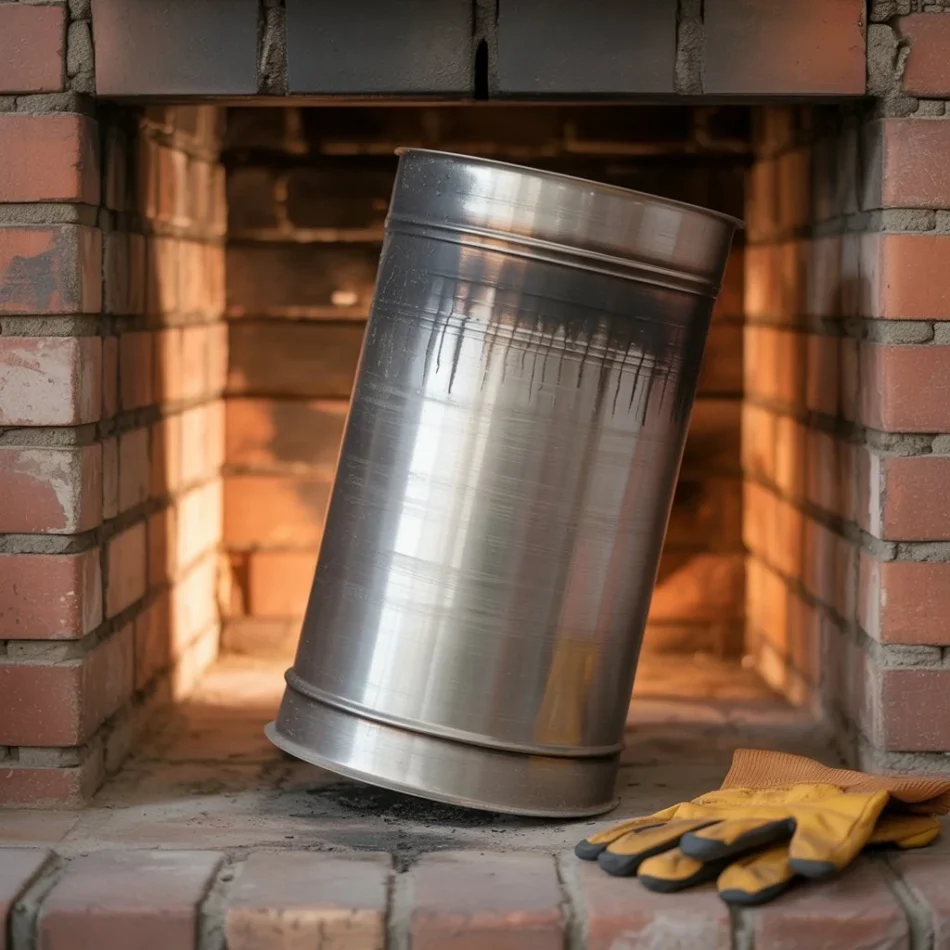Seattle’s weather is famous (or infamous) for its constant drizzle, cloudy skies, and long wet seasons. While that makes for cozy coffee shop vibes and lush green parks, it also creates some very specific challenges for homeowners — especially those with older homes. And one thing often overlooked? The chimney liner.
It might not sound glamorous, but that layer inside your chimney plays a huge role in keeping your home safe, dry, and breathable — especially in a soggy climate. Let’s break down why chimney liners are more than just outdated—they can be a silent risk in Seattle’s rainy environment.
What Even Is a Chimney Liner?
If you’ve never peeked inside your chimney (and let’s be real, who has?), here’s what you need to know. A chimney liner is the layer — usually clay tile, metal, or ceramic — that lines the inside of your chimney flue. Its main job is to:
- Contain the heat and smoke
- Direct combustion gases safely out of your house
- Protect the masonry from corrosion and fire damage
Without it, or with a worn-out one, your chimney becomes a sponge for trouble. And if you live in a rainy area like Seattle, that trouble comes fast.
“Think of your chimney liner like a raincoat for your fireplace system — without it, the storm gets in.”
Rain + Old Liners = Hidden Water Damage
Water and masonry are not friends. Seattle homeowners know the damage water can do to basements, siding, and roofs. But your chimney’s interior is just as vulnerable — especially if the liner is cracked or missing pieces.
Here’s why it matters:
- Cracks Let Water In: Older liners, especially clay ones, can crack over time. Rain seeps in, especially through the chimney cap or crown, and gets trapped.
- Freeze-Thaw Damage: During colder seasons, that trapped moisture freezes, expands, and causes even more damage.
- Mold Risk: Damp chimneys are breeding grounds for mold and mildew — which can affect indoor air quality.
- Corroded Flue Gases: If your chimney vents a gas furnace or water heater, rain mixed with flue gases can create acidic buildup, corroding the interior.
In short? Rain isn’t just falling on your roof — it might be quietly wrecking your chimney from the inside.
How Old Is Too Old?
If your home was built before the 1970s and you haven’t touched the chimney liner since, chances are it’s due for an upgrade.
Here’s a quick table to break it down:
| Chimney Liner Type | Common Lifespan | Signs of Trouble |
|---|---|---|
| Clay Tile | 50 years max | Cracking, pieces falling into fireplace |
| Metal (Stainless) | 15–25 years | Rust spots, smoke leaks |
| Cast-in-Place | 30–50 years | Harder to inspect, may hold moisture |
Old liners don’t usually give off loud warning signs — until it’s too late. That’s why chimney inspections are so essential in Seattle’s damp climate. The extra moisture speeds up wear and tear, especially in liners that weren’t built to handle today’s efficiency appliances.
Safety & Cost Breakdown: Is It Worth Replacing?
Let’s be honest — chimney repairs never sound exciting. But neither is dealing with chimney fires, carbon monoxide, or structural water damage.
Here’s a look at the safety and cost factors when it comes to your liner:
| Key Feature | Why It Matters | What It Might Cost (Seattle Avg.) |
|---|---|---|
| Safety | Prevents chimney fires, gas leaks | Priceless — safety first |
| Water Protection | Keeps rain from soaking bricks/mortar | $250–$600 for water sealing |
| Efficiency | Helps appliances vent properly | $1,200–$4,000 for full liner install |
| Mold Prevention | Reduces moisture buildup, mold risks | Inspection: $200–$400 |
| Long-Term Value | Boosts home resale & avoids future damage | Big savings on future repairs |
Replacing or relining your chimney might seem like a big job, but it’s a one-time investment that protects your whole home — especially when the rainy season doesn’t take a break.
So What Should You Do?
If you own a home in Seattle (or anywhere with high rainfall), here’s your simple chimney checklist:
- Schedule a chimney inspection at least once a year — fall is ideal before fireplace season kicks in.
- Check your chimney cap — this small piece keeps rain out and animals from nesting inside.
- Ask about your liner during inspection — when was it last checked or upgraded?
- Look for staining on interior walls near your fireplace — this can mean water is leaking through the chimney.
Also, consider modern stainless steel liners if your old clay liner is falling apart. These are especially good if you’ve upgraded to high-efficiency heating systems that require tighter venting control — a key LSI keyword here is “chimney liner replacement in rainy climates.”
Final Thoughts: Don’t Let the Rain In
Seattle’s rain is part of its charm — but it also demands a little more from homeowners. If your chimney liner is outdated or damaged, it’s not just a minor maintenance issue — it’s a safety risk and a hidden water leak waiting to happen.
The good news? With a simple inspection and some proactive steps, you can prevent costly damage and breathe a little easier when the rain starts falling.
So, before you light the next cozy fire or crank up the heater this fall, ask yourself: when’s the last time someone checked your chimney liner?
Because in a city like Seattle, a strong liner is more than a chimney upgrade — it’s your first line of defense against the rain.
Read More: Seattle Chimney Sweep
 WhatsApp Us Now
WhatsApp Us Now









